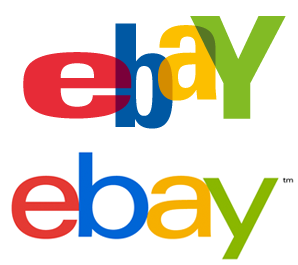 There is a lot to consider when developing a logo for your business. What is the purpose of a logo?
There is a lot to consider when developing a logo for your business. What is the purpose of a logo?
Thinking it through before getting someone to start designing is one of the keys to developing a logo that works for your business.
Most companies use a logo as symbol for a brand. It usually has the company name together with an icon and the company colors. Sometimes it is just type, or just initials. Often the type is a unique typeface, artwork that is solely the companies own.
 Sometimes the icon dominates the logo. Depending on the amount of marketing dollars put behind a logo, it may become a strong symbol for the company. If it is not used consistently, the impact is weakened.
Sometimes the icon dominates the logo. Depending on the amount of marketing dollars put behind a logo, it may become a strong symbol for the company. If it is not used consistently, the impact is weakened.
How do you ensure your logo is used consistently? Through the use of a branding style guide. Sometimes they are as simple as a few pages, outlining colors, typeface, vertical, horizontal and black & white versions. Sometimes a brand style guide may be almost a book, offering every example of background treatment, what NOT to do and providing the amount of white space between any other elements on the page, website and package.
In my experience, a short style guide is very helpful, but only companies that are licensing their product and having many many graphic designers and others using their logo need to go into a huge amount of detail. And often the people using the style guide are visual communicators, so having visual examples is often more helpful than lots and lots of paragraphs of copy that sometimes is open to interpretation.
To get started with developing a logo, it is helpful to provide direction to the designer that helps them to understand how you want to portray your brand. Make a list of words. Gathering samples of logos that you like and don’t like also helps. Especially if you can articulate what you like and don’t like about your samples. In marketing agency terms, this is know as a creative brief. It sets the tone and manner, provides examples of how the logo will be used and offers direction to the creative professionals who will be developing your company’s symbol.
Some find it helpful to talk about feelings - what customers, employees and users of the product/service are likely to feel or how you want them to feel. You’ll definitely want to focus on your target market, but logos also are important for others who are part of your business: employees, your vendors, and investors.
It’s easy to get carried away and find that you’re actually trying to recreate something else that you’ve seen and liked. Don’t end up with a logo that looks like your competitors! While imitation can be viewed as a compliment, being confused with your competitors is not.
I find it is important to provide plenty of input to the designer and talk about colors as well.
If the company will be using the logo predominately on company vans, work shirts and baseball caps, the font and size of lettering with icons needs to be thick enough to read from a driving distance or walking distance.
If most of the interactions with the company logo will be on a mobile phone via a website or an app held at a distance closer than arms length, then a different direction may make sense.
While you hope to develop a logo that will work “forever” for your brand, obviously times change, style and technology affects the logos. You’ll want to consider a refresh to your company logo if/when it becomes dated.
If you wait too long to refresh your brand and logo, it may be a total “redo” instead of just a minor update.
Where do you go to get a new logo?
Many people go to inexpensive websites like Fiverr, Logotournament or 99designs. This can be helpful in that they are cheap, but difficult if you’ve never given direction or developed a logo before.
Rather than go immediately to one of the cheap websites and hire a nameless, faceless designer, I’d recommend spend more time developing a creative brief. There are several samples of creative briefs here, here and here. Read through these examples and then put together your own brief, before approaching a graphic designer or going to a design website. You can also use a designer to consider other things such as creating invoices for your clients when doing business so they come across more professional, if you’d like to learn more I recommend you visit blog.fluidui.com for more information on using a designer for your start up business as well as access to free invoice templates.
It’s kind of like making an investment in a stock portfolio for your retirement by buying direct from an investment website, without using a investment broker with experience. However, if you are looking for a broker, you may want to check out this JAFX review. You may do just fine and be ready to brag about how much money you saved and earned, but then again, you may find that a little bit of knowledge can be a problem and want to be redoing your logo within a few months.
Sometimes working directly with a designer is the best thing, other times, you will fair better by going through someone who is great at giving creative direction.
If you find yourself saying something like “just…” or “I’ll know it when I see it” - then you are not the right person to give creative direction.
More detail is actually more helpful in getting initial direction. Having the parameters before you start makes it much more likely that a graphic designer will create something you’re looking for, than direction that says, “why don’t you be creative and I’ll pick the one I like the best.” Later when faced with a wide variety of styles, you find yourself combining different elements to mush together a logo.
Again, not the best way to go about designing your company’s symbol.
Having a well defined creative brief makes it much easier for YOU TOO!
Review the brief before you review the initial logos that the creative graphic designer submits. It will help you to evaluate it and will give you a guide to providing good feedback when faced with a variety of choices.
Evaluating the logo is definitely a skill as well as providing feedback to the designer. You’ll be tempted to show the samples to lots of people - your spouse, a friend, employees. Of course everyone has an opinion, but some opinions count more than others.
Good luck with your logo development. Let me know you found this helpful or if you think I forgot something along the way by leaving a comment below.
